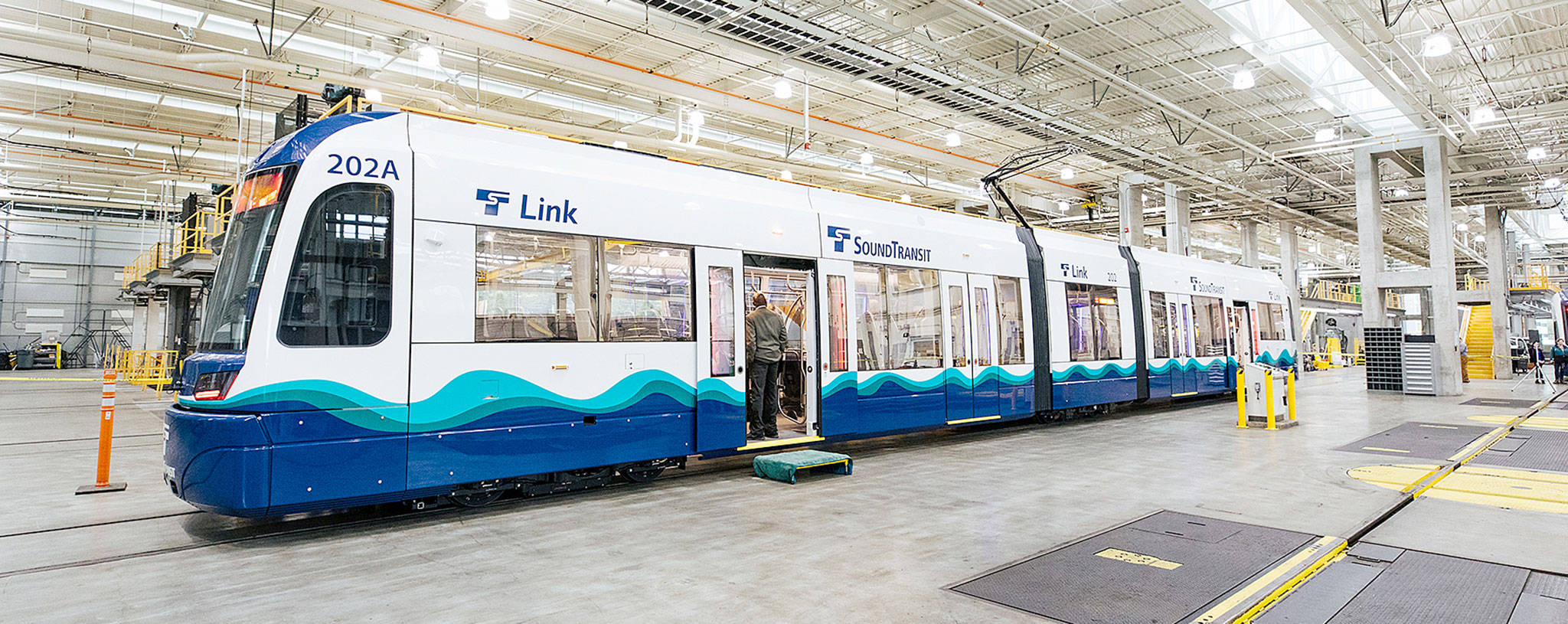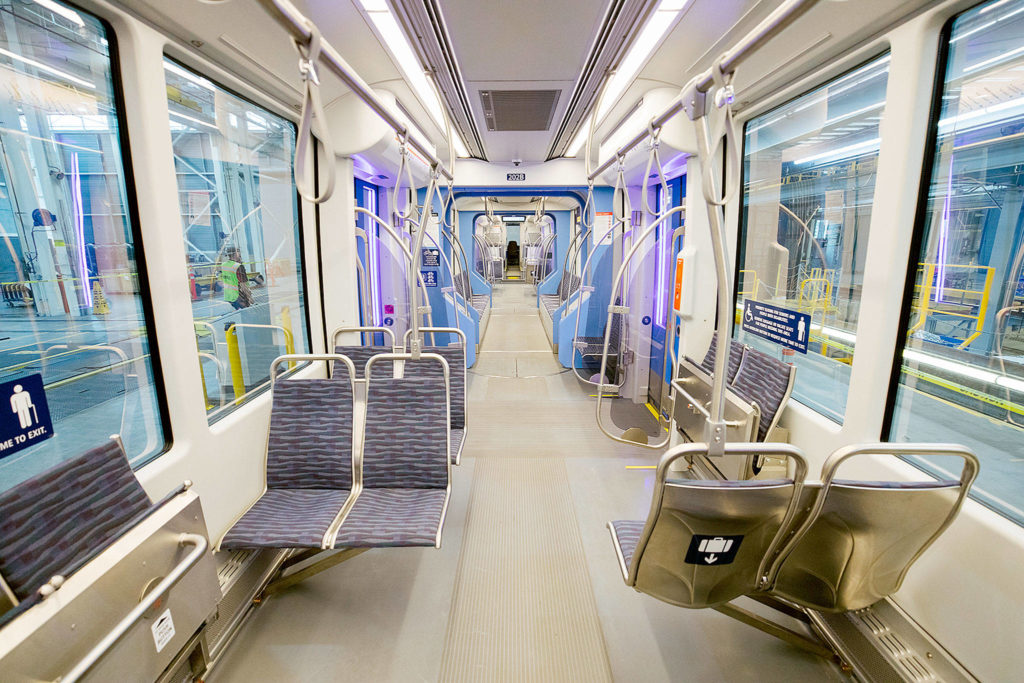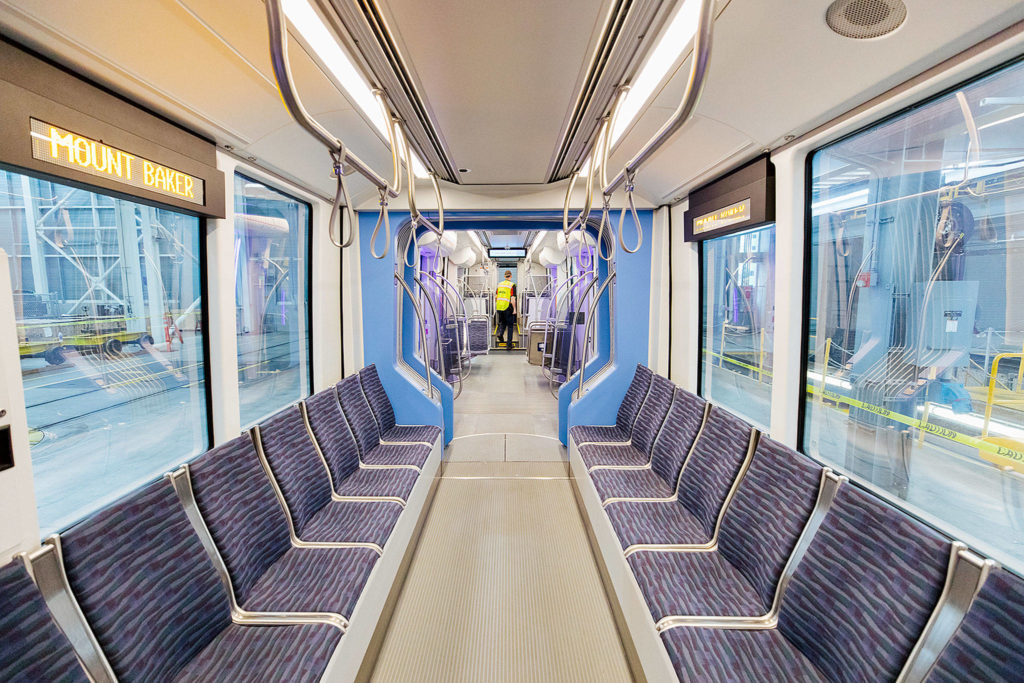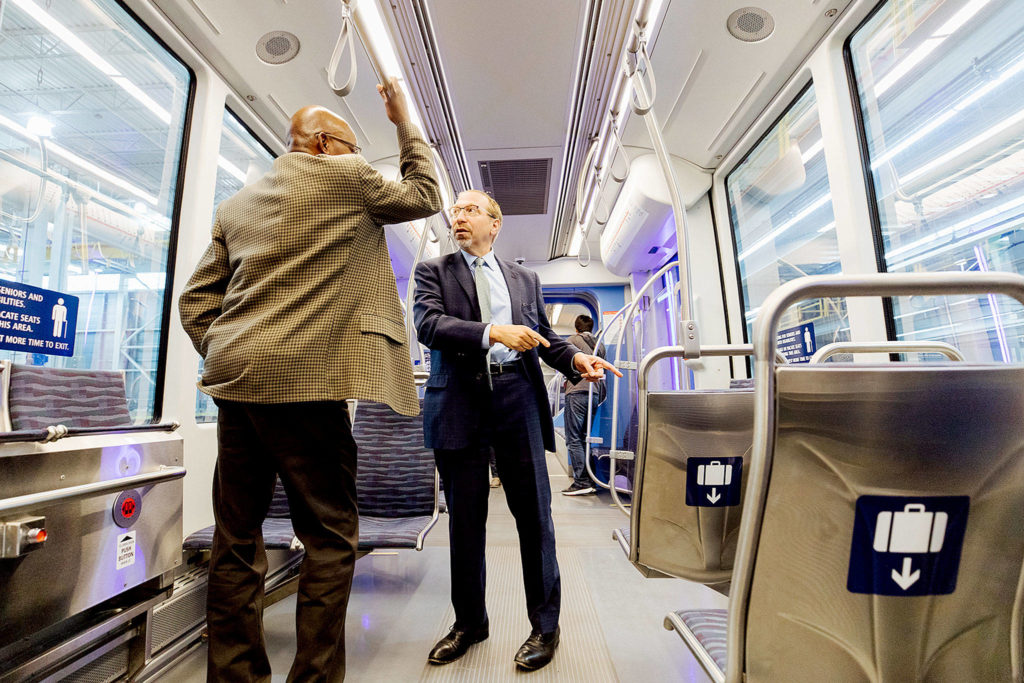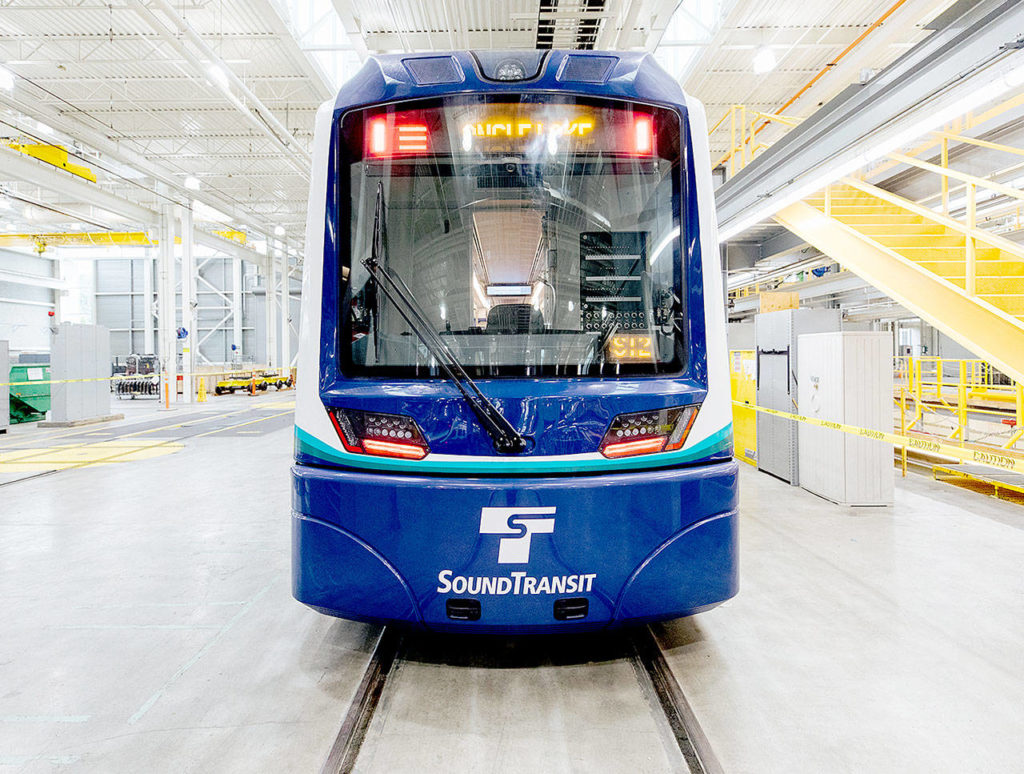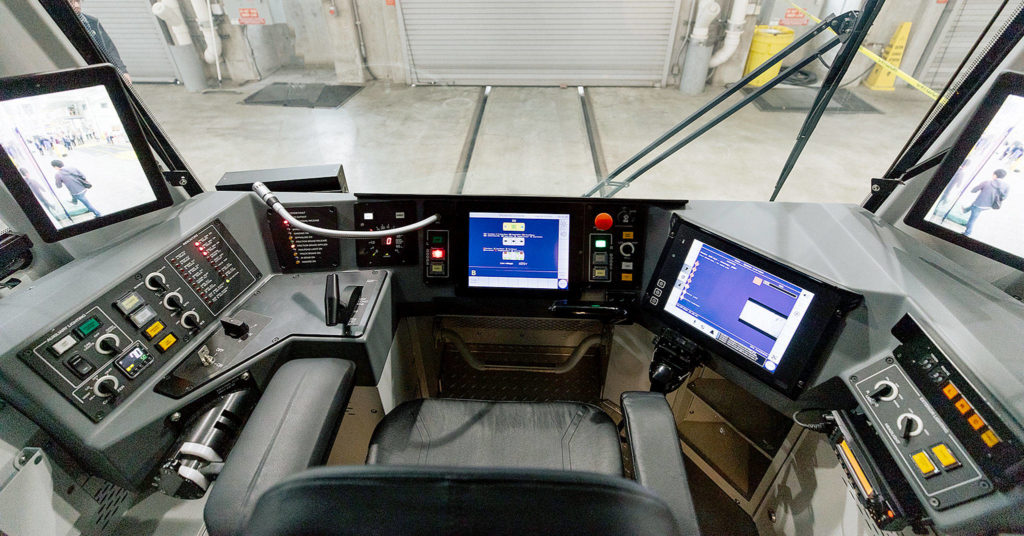By Mike Lindblom / The Seattle Times
SEATTLE — Transit riders who cherish personal space will be glad to know the next batch of light-rail trains are roomier in the midsection.
Sound Transit leaders and executives from Siemens Industry on Wednesday displayed the first of 40 railcars to arrive before service to Northgate Station begins in 2021. Another 112 railcars will arrive as light-rail expands to Bellevue and Overlake in 2023, and downtown Redmond, Lynnwood and Federal Way in 2024.
The cars cost taxpayers $642 million, or $4.2 million per vehicle.
The new Siemens trains, built in Sacramento, California, are more angular than the sausage-shaped Kinkisharyo trains that have operated here since mid-2009, though both provide 74 seats and nearly identical outer dimensions.
The interiors are bluer, and most important provide a one-meter-wide aisle through the middle, plus seven seats on either side. People can roll wheelchairs, luggage or bicycles through. Passengers seated in the center won’t knock knees, or be stumbled on by strap-hanging standees.
Siemens engineered its new S-700 railcars “specifically with the riders of Puget Sound in mind,” said Robin Stimson, vice president for business development, inside the Sodo train base. “It’s open, it’s safe, it’s a high performance vehicle that we think everybody’s going to enjoy.”
Siemens added legroom by reducing the space behind central seats, where Kinkisharyo trains needed chambers for utility and ventilation lines on either side, said Tracy Reed, executive project director for Sound Transit.
Siemens officials wouldn’t vouch for capacity figures, but the S-700 appears able to carry about 10 more people than the Kinkisharyos, whose targeted full load (half-standing, half-seated) is 148 riders by Sound Transit standards.
The railcars provide four bike hangers instead of two, and onboard fire extinguishers. To increase room for bikes and suitcases, Siemens reduced fold-down benches in the wheelchair zones from three seats to two. Windows are bigger, interior glass barriers smaller. The seat-pair opposite the bike storage faces center instead of forward.
If popular, these Seattle-inspired features would continue in other North American orders, said company spokeswoman Elizabeth Cho.
Some transit supporters lamented that Sound Transit should have added even more capacity while placing its order in 2016, by requiring walk-through access between railcars, like East Coast subways. Agency leaders rejected that strategy, arguing the cars need operator control cabs at either end, so they can be readily detached and recombined in the maintenance yards.
Another disappointment will be a lack of immediate new capacity next year, for the current line serving 75,000 daily riders.
Though the agency will receive one to three railcars per month, the available fleet won’t increase until Northgate Station opens, scheduled for September 2021.
As the first Siemens railcars enter service in early 2020, the 62 “Kinkis” will be trucked to Bellevue to retrofit their Automatic Train Protection (ATP) systems, which communicate with trackside devices to prevent collisions, said Paul Denison, executive operations director for light rail.
The Kinkis will need a new 25 mph speed setting in their ATP, to match a future 25 mph surface track segment near Bel-Red/130th Station in Bellevue that adds a layer to the 35 mph limit in Rainier Valley and 55 mph norm for tracks over Tukwila.
New Link light rail vehicle arrival from Sound Transit on Vimeo.
Riders have often asked why Sound Transit doesn’t just lease railcars, to meet faster-than-expected ridership growth since 2016 and tackle this year’s “Seattle Squeeze” of downtown road blockages. The answer: Compatible railcars aren’t out there.
Years ago, Sound Transit designed the system for 1,500 volt power — double the typical North American voltage for light rail. This reduces the number of substations and assures reliable power to the relatively fast trains, Reed said. This batch of Siemens railcars is customized for 1,500 volts.
Sound Transit CEO Peter Rogoff said that by 2024, when all the railcars are running, passengers can expect four-car trains every three minutes at peak times in the core between Lynnwood City Center and International District/Chinatown stations. From there, half will turn toward the Eastside, while the others go south to Rainier Valley, SeaTac and Federal Way.
New Link light rail vehicle manufacturing from Sound Transit on Vimeo.
Talk to us
> Give us your news tips.
> Send us a letter to the editor.
> More Herald contact information.
